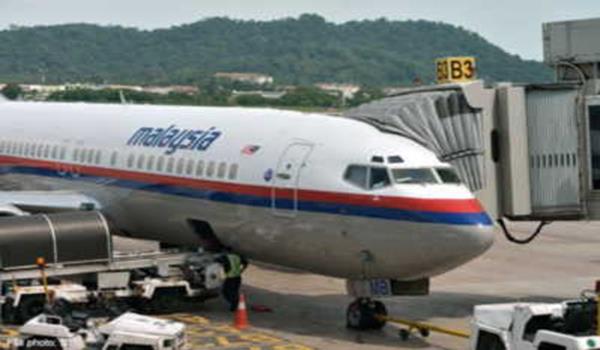The quick action of a Malaysia Airlines (MAS) pilot averted tragedy when he successfully landed a passenger aircraft after it was caught in the slipstream of a larger Jumbo jet.
Terrified passengers on board MH170 from Jakarta said the incident happened about 10 minutes after the pilot announced they were preparing to land at the Kuala Lumpur International Airport (KLIA) on Sunday.
Wee Cheng Yong felt the Boeing 737(800) plunge suddenly before swerving right and left.
“I remember the plane shaking violently. There was a lot of screaming because we expected to crash,” said the 68-year-old retiree.
Wee said passengers were hanging onto the seats in front of them and they were relieved when the pilot managed to land safely at about 3.05pm.
“Even the landing was turbulent but I am grateful the pilot managed to save us,” he said.
Sue Kaur, who was seated by a window, felt the aircraft jerking suddenly before seeing the plane’s wing tilting violently to the right.
“Passengers were crying out in fear. The plane was rattling before it dipped to the left,” said the 46-year-old housewife.
She also felt the plane dip further before the pilot managed to regain control and the aircraft started to gain altitude.
“This was my first flight overseas and I thought I was going to die,” she said.
She said the pilot subsequently apologised for the incident, explaining that air traffic control (ATC) had failed to inform the cockpit that they were flying in the vortex of a jumbo.
A former MAS pilot said all aircraft leave behind a vortex or wake turbulence, just like ships sailing on water, adding that aircraft wings cause huge coils of counter-rotating turbulent air which is usually invisible. This poses a danger to any aircraft behind.
He said ATCs usually warn smaller planes to stay a minimum of two to three minutes away from larger aircraft, especially during landing and take-off.
“Pilots who can see a larger aircraft ahead of them can also request (to ground control) for minimum separation for wake turbulence,” he said, stressing that the onus of avoiding wake turbulence was on both pilots and ATCs.
When contacted, MAS confirmed the flight experienced turbulence while approaching to land behind an A380 super jumbo at KLIA, adding that this could occur under certain environmental conditions.
“However, the operating captain maintained full control of the flight and the aircraft landed safely. The safety of the flight was never compromised,” the airline said.










